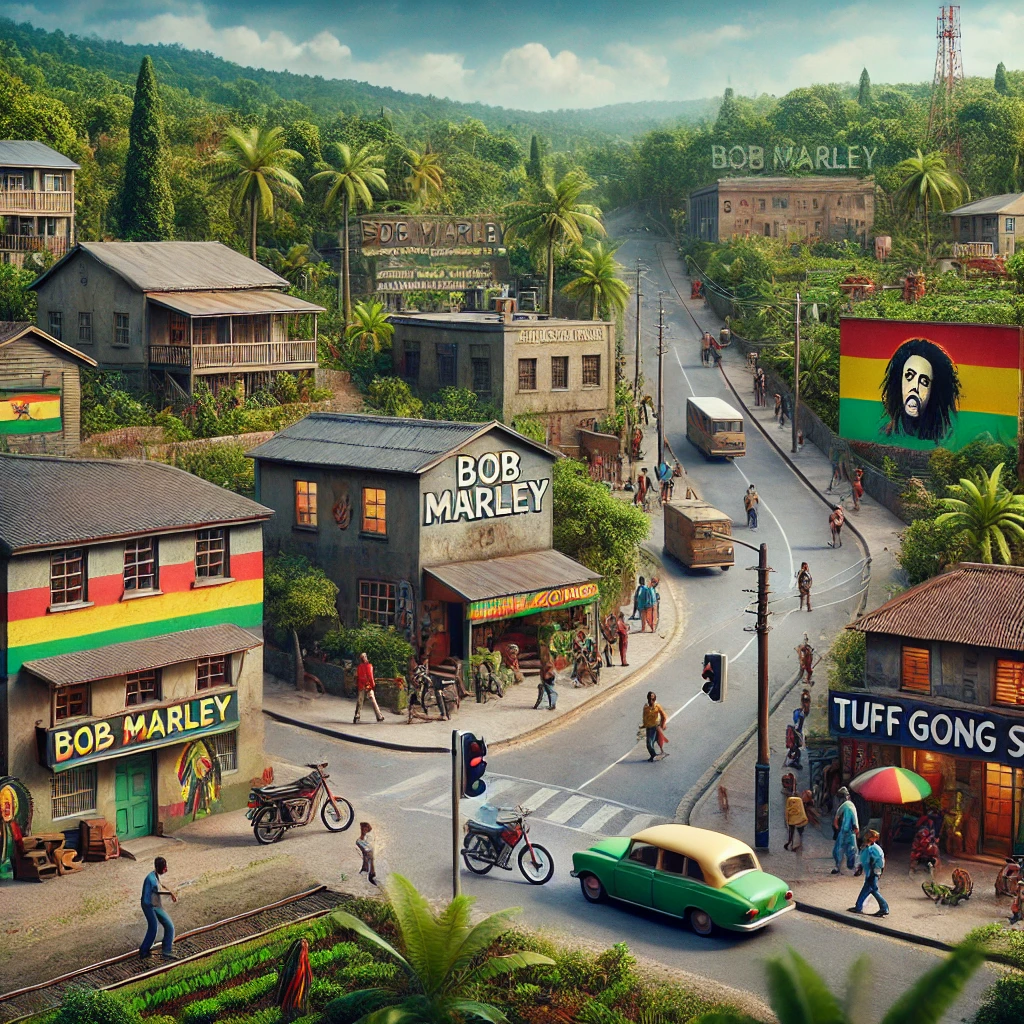Introduction:
Waagwan, mi bredren an’ sistren! Today, we’re embarking on a special journey through Kingston, Jamaica, to explore the life and legacy of the one and only Bob Marley. Known as the King of Reggae, Bob Marley’s influence extends far beyond music; he’s a symbol of resistance, love, and Rastafari. By following in his footsteps across Kingston, we’ll uncover the places that shaped his life, his music, and his message to the world.
Bob Marley’s Childhood Home: Where It All Began
Our journey starts at 56 Hope Road, the childhood home of Bob Marley, now known as the Bob Marley Museum. This iconic location is where Marley lived and recorded some of his greatest hits. Walking through the museum, you can feel the spirit of Marley’s life, from his humble beginnings to his rise as a global icon. The museum is filled with memorabilia, including Marley’s guitar, his stage outfits, and personal photographs that give insight into his life and legacy.
Trench Town: The Cradle of Reggae
Next, we head to Trench Town, often referred to as the birthplace of reggae. This vibrant community was where Bob Marley spent much of his youth, and it’s here that he honed his musical skills and developed his unique sound. A visit to Trench Town Culture Yard is a must—it’s a museum and cultural center dedicated to the musicians who emerged from this area, including Marley himself. The spirit of reggae is alive here, with murals, artifacts, and even the very rooms where Marley lived and practiced his music.
Tuff Gong Studios: The Heartbeat of Reggae
Our next stop is Tuff Gong Studios, the legendary recording studio founded by Bob Marley. Located in the heart of Kingston, Tuff Gong is where many of Marley’s most famous tracks were recorded. Today, the studio remains a hub for reggae music, attracting artists from around the world who come to record in the same space that once echoed with Marley’s voice. A tour of the studio offers a behind-the-scenes look at where the magic happens, from the control room to the vinyl pressing plant.
The Ethiopian Orthodox Church: A Spiritual Connection
Bob Marley was deeply spiritual, and his connection to the Ethiopian Orthodox Church was an important part of his life. In 1977, Marley was baptized into the Ethiopian Orthodox Church, taking on the name Berhane Selassie. Visiting the church in Kingston provides insight into the spiritual side of Marley’s life, highlighting his devotion to Haile Selassie I and his commitment to the Rastafari faith.
Hope Gardens: Reflection and Peace
After exploring the vibrant streets of Kingston, take some time to relax and reflect at Hope Gardens. This peaceful botanical garden was a place where Marley would come to meditate and find solace. The lush surroundings and tranquil atmosphere offer a perfect setting to reflect on the journey so far and the impact of Marley’s life and music.
National Heroes Park: Honoring Jamaica’s Icons
Our final stop is National Heroes Park, where Bob Marley’s legacy is honored alongside Jamaica’s national heroes. While Marley himself isn’t buried here, the park serves as a reminder of the impact he had on Jamaican culture and history. The park is a place of reflection, where visitors can pay their respects to the icons who have shaped the nation.
Conclusion:
Following in Bob Marley’s footsteps through Kingston is more than just a journey through a city—it’s an exploration of the life and legacy of a man who changed the world through his music and message. From his childhood home to the recording studio that became the heart of reggae, every stop on this journey offers insight into the spirit of Bob Marley and the power of Rastafari. As we walk the paths he once tread, we’re reminded of his enduring message of love, unity, and resistance. One love, mi friend, and blessings on your journey through Kingston!

